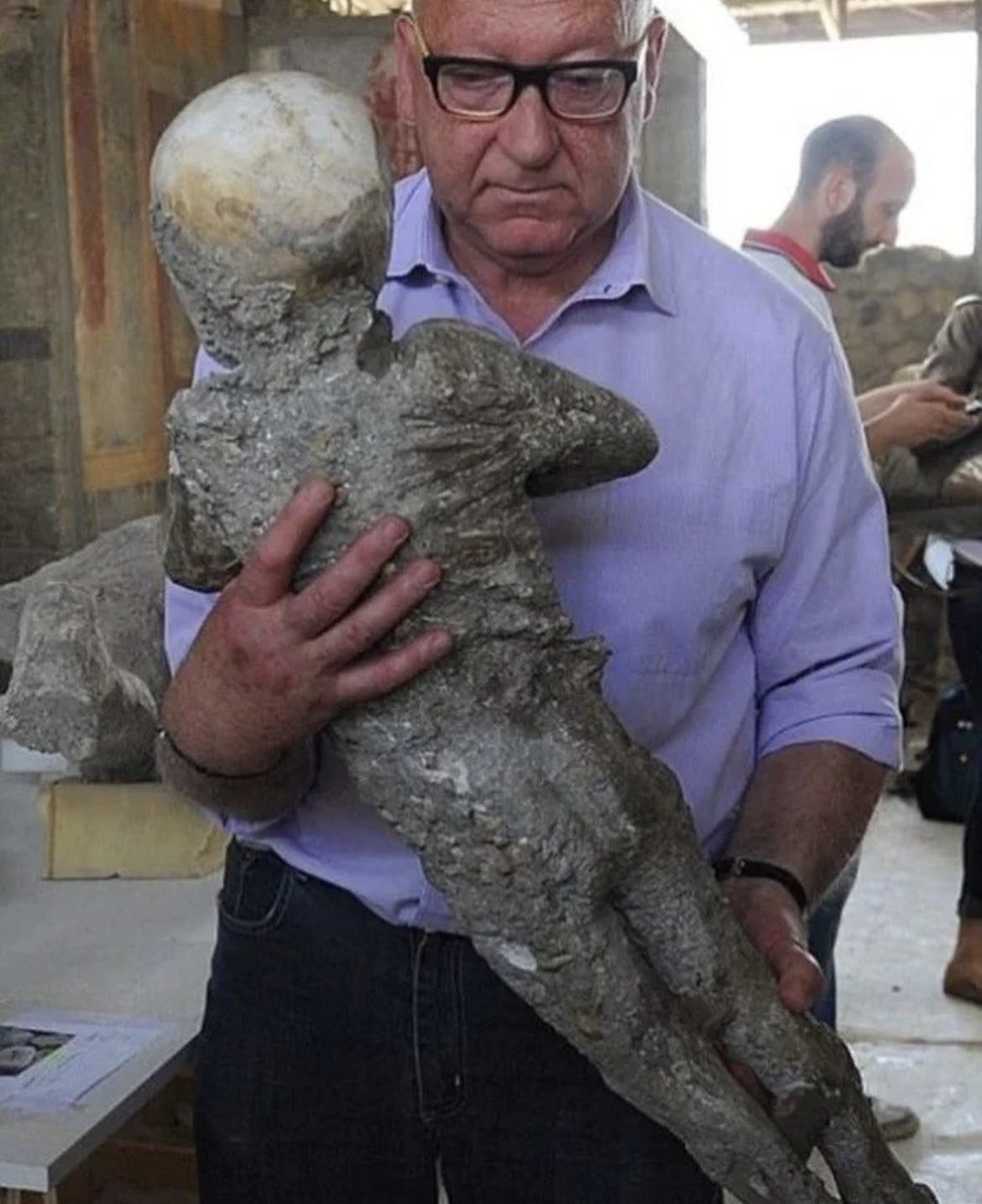I recently came across a disturbing image on Twitter. It depicted an archaeologist holding a plaster cast of a child, a poignant representation of the tragic events that unfolded nearly two millennia ago in Pompeii. The cast serves as a haunting reminder of the horrifying event that occurred during the catastrophic eruption of Mount Vesuvius.
Back in 79 AD, Mount Vesuvius unleashed its fury upon the region, leaving an indelible mark on history. Pompeii, once a thriving Roman town near the Bay of Naples, was abruptly consumed by a torrent of volcanic ash and debris. The unsuspecting inhabitants, going about their daily lives, were suddenly confronted with a deadly cataclysm from which there was no escape.
The child, estimated to be around four years old, was one of the many victims who fell prey to this disaster. As the volcano unleashed its wrath, the child sought solace in the loving embrace of their mother. However, the intense heat and toxic gases generated by the eruption quickly overwhelmed them, sealing their tragic fate. The plaster cast, frozen in time, captures the heart-wrenching final moments of the child and their mother, forever preserving the magnitude of human suffering that unfolded during those fateful hours.
Contemplating the image, I couldn’t help but reflect on the future apocalypse described in the Bible, which awaits those who refuse to believe in the Master and the Greatest Man that ever lived. The Scripture aptly states, “But the day of the Lord will come as a thief in the night, in which the heavens will pass away with a great noise, and the elements will melt with fervent heat; both the earth and the works that are in it will be burned up.”
The haunting image of the plaster cast compels us to ponder the fragility of our existence and the impermanence of human achievements. It serves as a somber reminder of the catastrophic forces that can shape our lives and the importance of acknowledging our place in a greater narrative.
Image (Credit: Historic Vids)


















